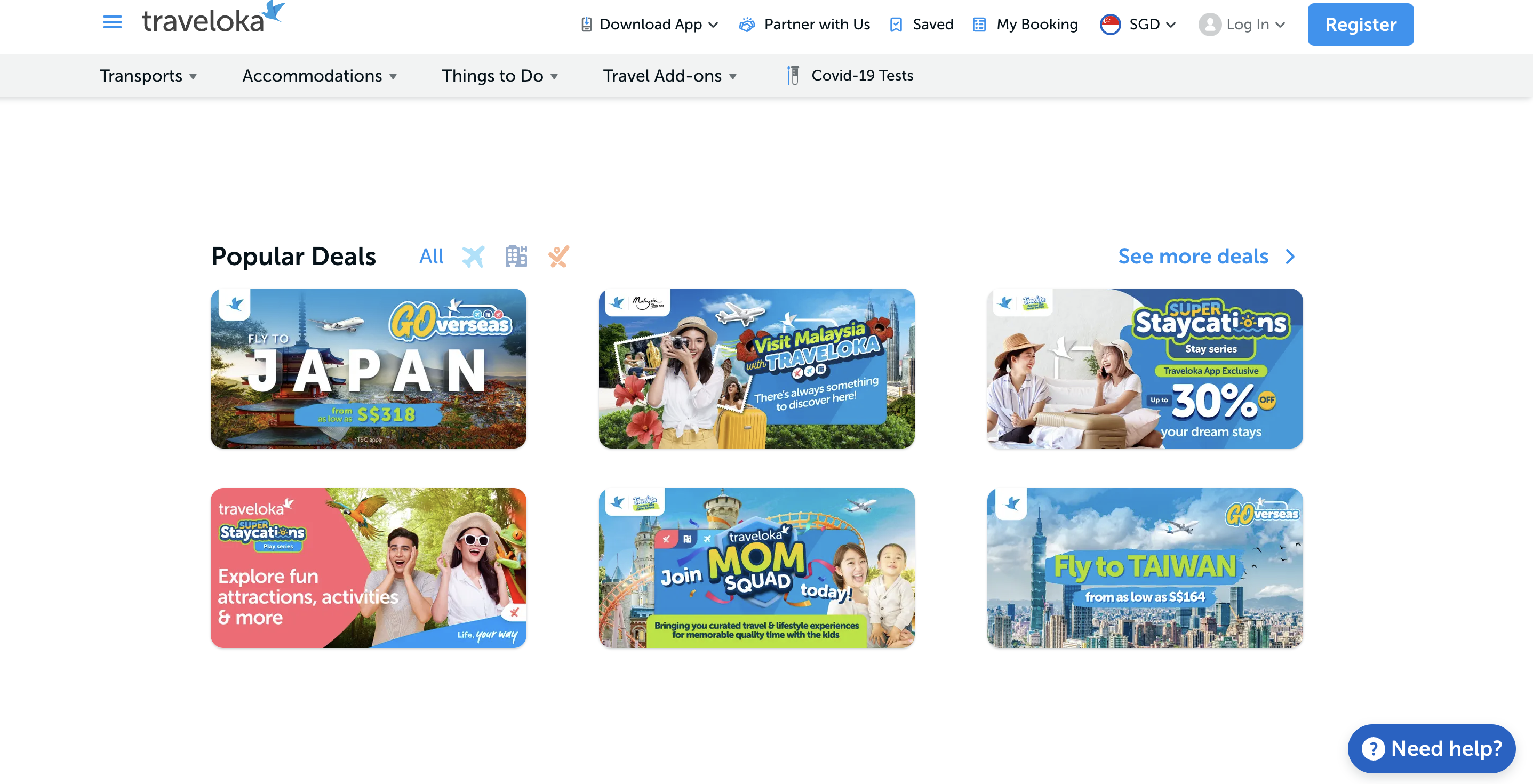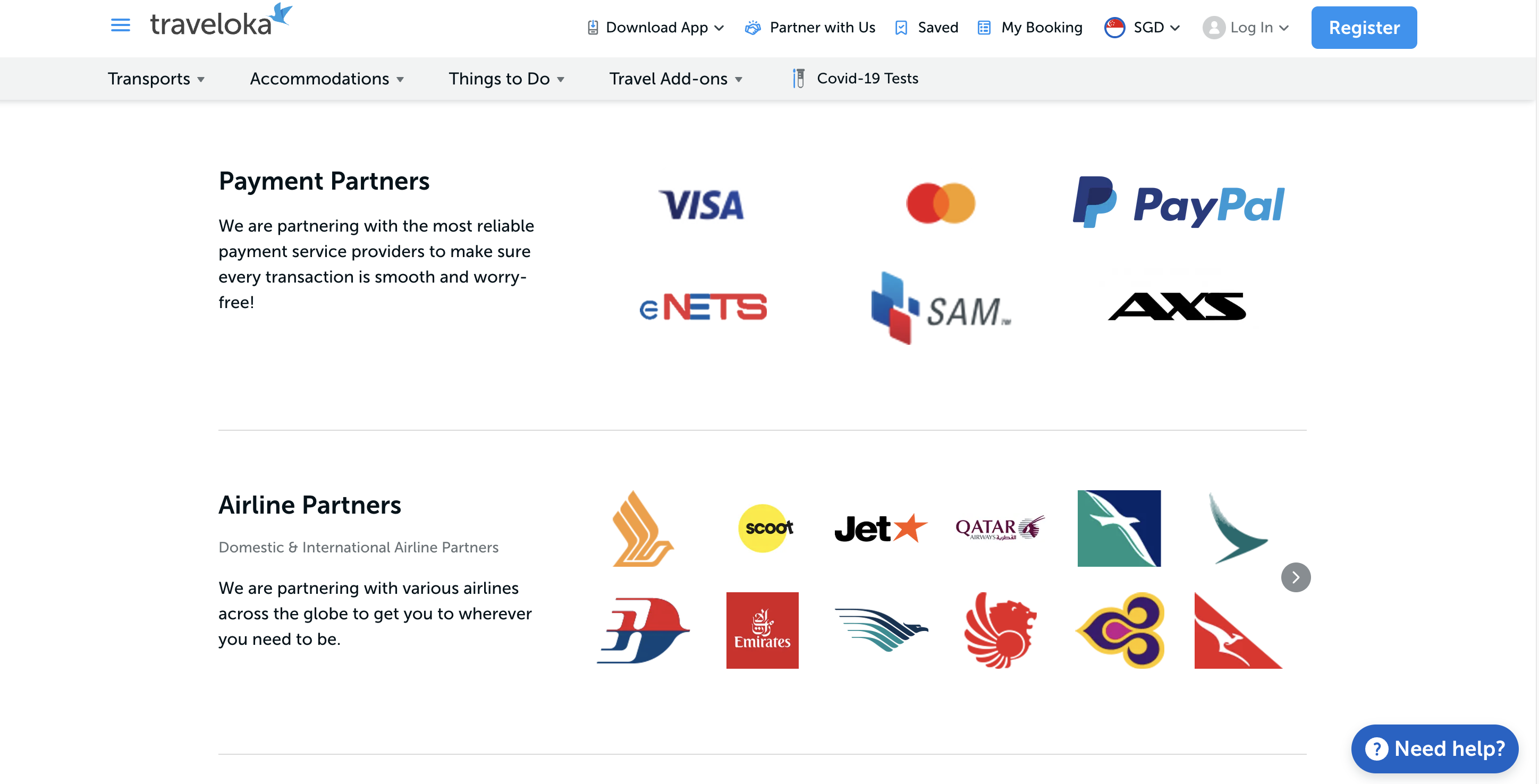Planning a trip in the post-pandemic era is tricky—one experiences the familiar excitement and promise of adventure, but mixed in with that is a sense of uncertainty. After the last two years, travel is no longer what it once was, with several businesses having been shut down and regulations constantly changing. Accordingly, the savvy traveler needs to stay abreast of these changes to ensure their much-anticipated trip doesn’t fall short of expectations.
How much has consumer demand changed, and how has technology changed in the travel industry to meet these changes in the market? KrASIA spoke with Caesar Indra, president of Traveloka, to find out.
The following interview has been consolidated and edited for brevity and clarity.
KR: Can you tell us more about Traveloka’s role in supporting the recovery of the travel industry? For instance, you recently announced a partnership with Tourism Malaysia.
Caesar Indra (CI): We’ve always partnered with many tourism boards, not only in Southeast Asia but globally. Currently, recovery is driven by domestic travel. But as borders reopen, people will start traveling internationally again. Our job is to accelerate the recovery from the pandemic.
We’ve been working with governments around the world to do so. For example, we took a leadership role in the G-20, in collaboration with the Ministry of Communication and Information in Indonesia, as well as the Ministry of Tourism and Creative Economy. We were appointed to coordinate the G-20 Digital Economy Working Group, comprising over 40 tech companies. We also supported the Tourism Working Group agenda with the Ministry of Tourism and Creative Economy to implement action plans on their Bali agenda, particularly on human capital development, innovation, digitalization, creative economy, and climate action.
As a travel platform in this region, our role is also to help our 50 million users stay informed of the changes in rules and regulations. For example, when Singapore’s borders reopened, we communicated this to our users in Indonesia, Thailand, and other countries. We promoted destinations like Sentosa, as there are many activities and micro-destinations within the island that our customers want to learn more about. We hope that by doing this, we can convert the demand into real sales.

KR: Traveloka also recently received USD 300 million in funding from its latest round. Can you share more about how you plan to use those funds?
CI: The latest funding really helped us strengthen our balance sheet. It also allowed us to focus on the deeper execution of our core business, which is travel and financial services, as well as invest in our future. Our focus is really to strengthen our leadership in the Southeast Asia region with this funding.
KR: We see that Traveloka is establishing itself as a superapp of sorts — can you tell us more about new, upcoming services and partnerships?
CI: Sure. As you know, we are a travel platform. We focus on providing a seamless end-to-end connected experience to our users. Consumers today want options, and it’s our job to present comprehensive, high-quality travel products and services.
As travel recovers, customers’ needs will continue to evolve. We plan to ensure our products and services remain relevant to our users in every market. This means deepening our partnerships and expanding them globally so we can connect our users to more quality experiences. We plan to expand our offerings around PayLater and insurance options for more users on our platform in the hope that these can help our users finance their travel aspirations, since in this region, the penetration of credit is very low.
Since the pandemic, users’ needs have also evolved. Sustainable or purposeful travel has become a key criterion for their decision-making. We want to respond to this and incorporate it into our product and operations strategy.
In terms of services or partnerships, as we double down on travel, we will continue to evaluate the relevance of our offerings to the latest customers’ needs and behavior in every market. We will continue to expand our partnerships globally, to enrich our offerings to our users. This will ensure they get complete selections based on their criteria at the most competitive price and meet Traveloka’s standards.

Recently, we partnered with the Global Sustainable Tourism Council (GSTC) to help accelerate the tourism industry toward sustainable tourism. In 2022, for example, we facilitated training on sustainability for Indonesian hoteliers. This session was attended by the Ministry of Tourism of Indonesia, and was very successful with high engagement from the hotels. We want to roll this out to other countries, such as Thailand, Vietnam, and greater Southeast Asia soon. Environmental and social sustainability around the tourism sector is our concern, and we would like to take a leadership role and leverage our influence in the region to help make this a reality.
KR: Are you looking at any digital payment partners? Or is this your own digital payment infrastructure?
CI: Financial services are part of our product, and they are built around our core travel business. To facilitate digital payments, we’ve worked with global partners to build our own solution to accept methods, such as bank transfers in Indonesia and other markets. We also accept credit cards and other payment methods such as Paypal and internet banking.

PayLater is a solution we built in-house. We leveraged data from our proprietary platform and AI machine learning to build a creditworthiness model, which determines whether or not a user should get a credit or loan, and how much they should get. We also work closely with the Indonesian regulator OJK to ensure we comply with regulations, and we report our credit performance and criteria met every quarter.
PayLater is important in Indonesia and Southeast Asia because a large proportion of the population is unbanked or underbanked. Credit card penetration is lower than 6%, so our goal is to offer credit to those who are qualified but cannot get it due to a lack of information. We address this by using our proprietary data and technology. We hope to help fulfill the aspirations of Indonesians to travel, freeing up cash so they don’t have to wait until the last minute and risk increased ticket prices or losing seats.
KR: From your observations, are there any key differences in marketing travel to different Southeast Asian countries now that we are in the post-pandemic era?
CI: There are definitely differences within Southeast Asia. Consumer behaviors and marketing need to be localized, and technology allows companies like Traveloka to understand and anticipate changing customer behavior.
For example, Malaysia and Thailand respond better to promotions, while those in the Philippines prefer word-of-mouth recommendations from social media. In Indonesia, digital access makes them respond better to marketing activities. During our Epic Sale in 2022, we gathered more than 400,000 viewers in a week.
There are also subtle differences in travel preferences. Singaporeans prefer international travel, while Vietnamese prefer domestic travel. In fact, the number of airline seats in Vietnam has grown more than 30%, and our business has doubled compared to before the pandemic.
KR: What do you think will be the next breakthrough in travel tech?
CI: I think, for us, a breakthrough or innovation doesn’t mean new or advanced technology but making things work better for our customers. I believe in the future, travelers will look for a seamless and more connected travel experience. The breakthrough comes from reducing potential travel anxiety to nearly nothing. From a customer’s point of view, they should be able to conveniently discover information and get high-quality services throughout their entire trip. This includes the period before they travel, when they reach their destination, and getting from point A to point B.
Additionally, there should be flexibility for post-pandemic travelers, so they can be comfortable with changes in their travel plans. As a global platform within the travel industry, we can work with suppliers to develop solutions and a connected experience that is flexible for travelers. That’s the breakthrough in travel.

